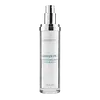What's inside
What's inside
 Key Ingredients
Key Ingredients

 Benefits
Benefits

 Concerns
Concerns

 Ingredients Side-by-side
Ingredients Side-by-side

Water
Skin ConditioningGlycerin
HumectantCetearyl Alcohol
EmollientIsononyl Isononanoate
EmollientPyrus Malus Fruit Extract
Skin ConditioningPotassium Cetyl Phosphate
EmulsifyingTribehenin
EmollientGlyceryl Caprylate
EmollientSodium Polyacryloyldimethyl Taurate
Emulsion StabilisingDisodium Lauriminodipropionate Tocopheryl Phosphates
CleansingSqualane
EmollientLactobacillus Ferment
Skin ConditioningSilica
AbrasivePropanediol
SolventTrisodium Ethylenediamine Disuccinate
Caprylic/Capric Triglyceride
MaskingLycium Barbarum Fruit Extract
AstringentBetaine
HumectantGlyceryl Undecylenate
EmollientCetyl Palmitate
EmollientSorbitan Stearate
EmulsifyingPolysorbate 80
EmulsifyingOpuntia Ficus-Indica Stem Extract
Skin ConditioningCalcium Gluconate
HumectantGluconolactone
Skin ConditioningTremella Fuciformis Sporocarp Extract
AntioxidantSodium Hyaluronate
HumectantCitric Acid
BufferingHydrogenated Lecithin
EmulsifyingGlucose
HumectantHydrolyzed Pea Protein
EmollientTocopherol
AntioxidantSodium Chloride
MaskingPalmitoyl Tetrapeptide-10
Skin ConditioningSodium Succinate
BufferingPhenoxyethanol
PreservativeSodium Benzoate
MaskingBenzoic Acid
MaskingDehydroacetic Acid
PreservativeWater, Glycerin, Cetearyl Alcohol, Isononyl Isononanoate, Pyrus Malus Fruit Extract, Potassium Cetyl Phosphate, Tribehenin, Glyceryl Caprylate, Sodium Polyacryloyldimethyl Taurate, Disodium Lauriminodipropionate Tocopheryl Phosphates, Squalane, Lactobacillus Ferment, Silica, Propanediol, Trisodium Ethylenediamine Disuccinate, Caprylic/Capric Triglyceride, Lycium Barbarum Fruit Extract, Betaine, Glyceryl Undecylenate, Cetyl Palmitate, Sorbitan Stearate, Polysorbate 80, Opuntia Ficus-Indica Stem Extract, Calcium Gluconate, Gluconolactone, Tremella Fuciformis Sporocarp Extract, Sodium Hyaluronate, Citric Acid, Hydrogenated Lecithin, Glucose, Hydrolyzed Pea Protein, Tocopherol, Sodium Chloride, Palmitoyl Tetrapeptide-10, Sodium Succinate, Phenoxyethanol, Sodium Benzoate, Benzoic Acid, Dehydroacetic Acid
Aloe Barbadensis Sprout
HumectantIsododecane
EmollientTitanium Dioxide
Cosmetic ColorantMethicone
EmollientPolyglyceryl-4 Isostearate
EmulsifyingCetyl Dimethicone
EmollientHexyl Laurate
EmollientCyclopentasiloxane
EmollientPEG/PPG-20/15 Dimethicone
EmulsifyingSaccharomyces Cerevisiae Extract
Skin ConditioningPEG-8
HumectantDioctyldodecyl Dodecanedioate
EmollientIron Oxides
Vitis Vinifera Seed Extract
AntimicrobialGlycerin
HumectantO-Cymen-5-Ol
AntimicrobialSilica
AbrasiveCyclomethicone
EmollientDisteardimonium Hectorite
StabilisingPropylene Carbonate
SolventMaris Sal
Skin ConditioningDimethicone/Vinyl Dimethicone Crosspolymer
Skin ConditioningAloe Barbadensis Sprout, Isododecane, Titanium Dioxide, Methicone, Polyglyceryl-4 Isostearate, Cetyl Dimethicone, Hexyl Laurate, Cyclopentasiloxane, PEG/PPG-20/15 Dimethicone, Saccharomyces Cerevisiae Extract, PEG-8, Dioctyldodecyl Dodecanedioate, Iron Oxides, Vitis Vinifera Seed Extract, Glycerin, O-Cymen-5-Ol, Silica, Cyclomethicone, Disteardimonium Hectorite, Propylene Carbonate, Maris Sal, Dimethicone/Vinyl Dimethicone Crosspolymer
 Reviews
Reviews

Ingredients Explained
These ingredients are found in both products.
Ingredients higher up in an ingredient list are typically present in a larger amount.
Glycerin is already naturally found in your skin. It helps moisturize and protect your skin.
A study from 2016 found glycerin to be more effective as a humectant than AHAs and hyaluronic acid.
As a humectant, it helps the skin stay hydrated by pulling moisture to your skin. The low molecular weight of glycerin allows it to pull moisture into the deeper layers of your skin.
Hydrated skin improves your skin barrier; Your skin barrier helps protect against irritants and bacteria.
Glycerin has also been found to have antimicrobial and antiviral properties. Due to these properties, glycerin is often used in wound and burn treatments.
In cosmetics, glycerin is usually derived from plants such as soybean or palm. However, it can also be sourced from animals, such as tallow or animal fat.
This ingredient is organic, colorless, odorless, and non-toxic.
Glycerin is the name for this ingredient in American English. British English uses Glycerol/Glycerine.
Learn more about GlycerinSilica, also known as silicon dioxide, is a naturally occurring mineral. It is used as a fine, spherical, and porous powder in cosmetics.
Though it has exfoliant properties, the function of silica varies depending on the product.
The unique structure of silica enhances the spreadability and adds smoothness, making it a great texture enhancer.
It is also used as an active carrier, emulsifier, and mattifier due to its ability to absorb excess oil.
In some products, tiny microneedles called spicules are made from silica or hydrolyzed sponge. When you rub them in, they lightly polish away dead skin layers and enhance the penetration of active ingredients.
Learn more about Silica